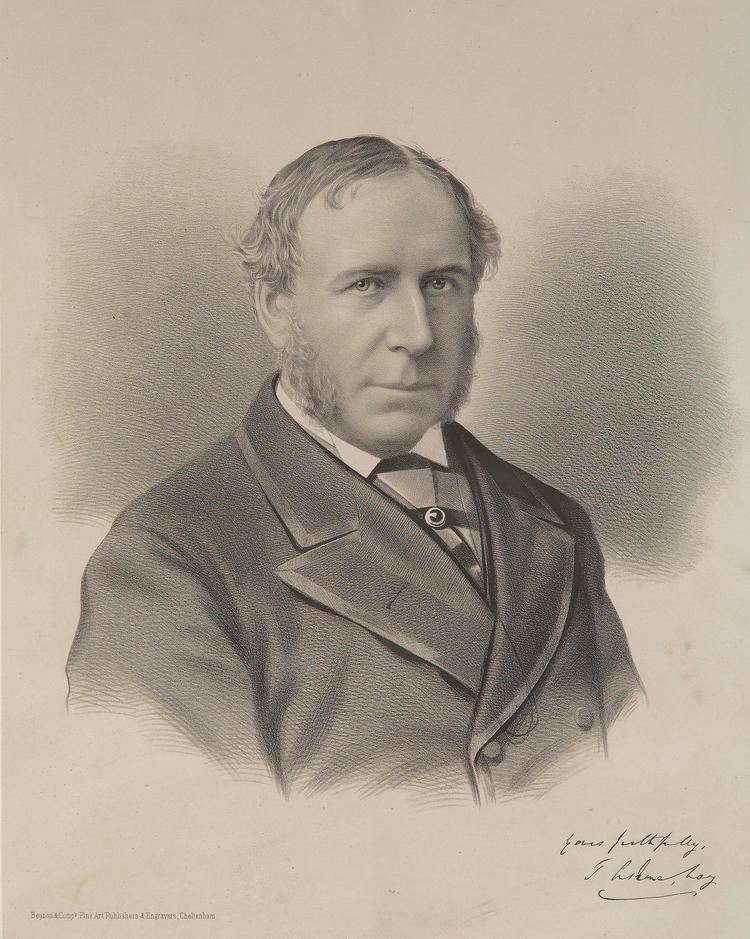Monarch Victoria Role Book by Erskine May | Name Erskine May | |
 | ||
Preceded by Sir Denis Le Marchant, Bt Full Name Thomas Erskine May Similar A Manual of Parliame, Parliamentary Practice in New Zeal, The Standard Code of P, Bourinot's Rules of Order, Mason's Manual of Legislativ | ||
Thomas Erskine May, 1st Baron Farnborough, (8 February 1815 – 17 May 1886) was a British constitutional theorist. This derived from his career at the House of Commons.
Contents

Biography
Thomas Erskine May was born in Highgate, Middlesex, on 8 February 1815. He was christened on 21 September 1815 at St Martin-in-the-Fields, Westminster with his parents being registered as Thomas and Sarah May. He was educated at Bedford School.
May began his parliamentary service in 1831, at the age of 16, as Assistant Librarian in the House of Commons Library. He was admitted to the Middle Temple on 20 June 1834 and called to the bar on 4 May 1838. May married Johanna Laughton, of Fareham, on 27 August 1839. May became examiner of petitions for private bills in 1846 and from 1847 to 1856 was Taxing Master for both Houses of Parliament. In 1856 he became Clerk Assistant of the House of Commons.
May was appointed a Companion of the Order of the Bath (CB) on 16 May 1860 and promoted to Knight Commander (KCB) on 6 July 1866. On 16 February 1871, he was appointed Clerk of the House of Commons by letters patent.
In 1873, he was elected a bencher of the Middle Temple and awarded an honorary Doctorate of Civil Law by the University of Oxford in 1874. In 1880, he was made a Reader of the Middle Temple and appointed to the Privy Council in 1884.
On 10 May 1886, shortly after his retirement as Clerk of the House of Commons, May was created "Baron Farnborough, of Farnborough, in the county of Southampton". He died on 17 May 1886 and left no heirs and so the barony became extinct, making it the second-shortest-lived peerage in British history, after the Barony of Leighton.
Sir William McKay, who edited Erskine May's private journal, has suggested that May was possibly an unacknowledged son or grandson of Thomas Erskine, 1st Baron Erskine.
Notable works
May's most famous work, A Treatise upon the Law, Privileges, Proceedings and Usage of Parliament (now popularly known as Erskine May: Parliamentary Practice or simply Erskine May), was first published in 1844. The book is currently in its 24th edition (2011). It is informally considered part of the constitution of the United Kingdom. The guide is authoritative in many Commonwealth nations, often with strong influence on constitutional convention.
Another notable work is The Constitutional History of England since the Accession of George III, 1760–1860 (ISBN 0-8377-2429-5). May's work was rejected by later historians, such as Herbert Butterfield who wrote, "Erskine May must be a good example of the way in which an historian may fall into error through an excess of brilliance. His capacity for synthesis, and his ability to dovetail the various parts of the evidence ... carried him into a more profound and complicated elaboration of error than some of his more pedestrian predecessors ... he inserted a doctrinal element into his history which, granted his original aberrations, was calculated to project the lines of his error, carrying his work still further from centrality or truth."
